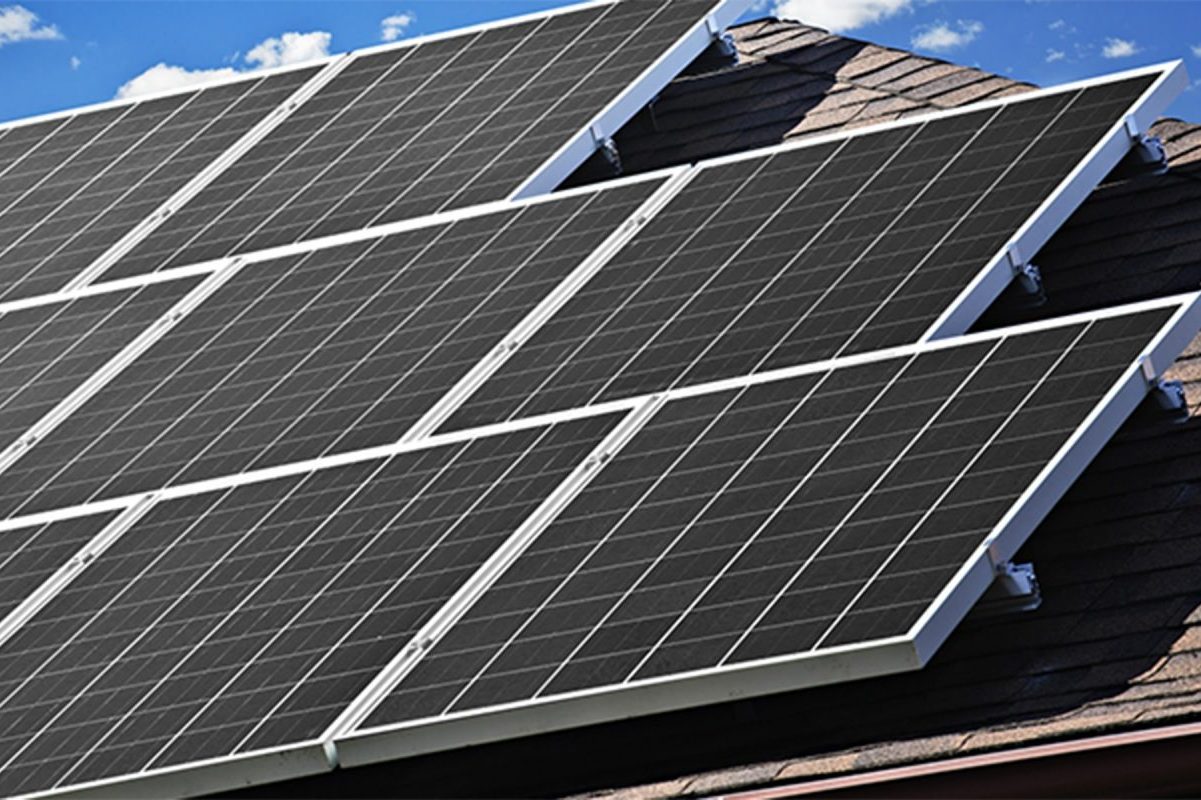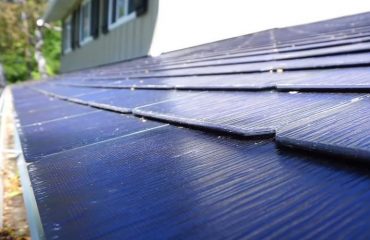Solar panel technology has experienced a power surge in recent years, with boosting efficiency driving revolutionary changes in the industry. From the earliest photovoltaic cells to today’s high-performance modules, the evolution of solar panel efficiency has been nothing short of remarkable. These advancements have not only made solar power more environmentally friendly but also increasingly cost-effective for homeowners looking to reduce their energy bills. As research continues to push the boundaries of what’s possible, the future of solar looks brighter than ever.

The Evolution of Solar Cell Technology
First Generation: Silicon Cells
The first solar cells, developed in the 1950s, were made from crystalline silicon. These cells established the foundation for photovoltaic technology and paved the way for future advancements. While the efficiency of these early cells was relatively low, typically around 6%, they proved that sunlight could be directly converted into electricity. Scientists and researchers worked tirelessly to improve the purity of the silicon and optimize the cell design, gradually increasing efficiency over time. Despite their limitations, these first-generation silicon cells demonstrated the potential of solar power and sparked a revolution in renewable energy. As research continued, the efficiency of silicon cells improved, making solar power increasingly viable for practical applications. Today, crystalline silicon remains the most widely used material in solar panels, with modern cells achieving efficiencies of over 20%. The legacy of these pioneering cells continues to shape the solar industry and inspire new innovations.
Second Generation: Thin-Film Cells
The development of thin-film solar cells in the second generation of solar technology marked a significant step forward in efficiency and affordability. These cells utilize semiconductor materials like cadmium telluride (CdTe) and copper indium gallium selenide (CIGS), which can be deposited in thin layers onto flexible substrates. This innovative design allows for the creation of lightweight, adaptable solar panels that can be integrated into various surfaces, such as building facades or even clothing. By reducing the amount of raw materials required and simplifying the manufacturing process, thin-film cells have contributed to lowering the overall cost of solar energy. While their efficiency is generally lower than traditional silicon cells, the advantages of thin-film technology have made solar power more accessible and versatile for a wider range of applications.
Third Generation: Multi-Junction and Perovskite Cells
The latest advancements in solar cell technology are pushing the boundaries of efficiency even further. Multi-junction cells stack multiple semiconductor layers, each tuned to absorb a different part of the light spectrum. By capturing more energy from sunlight, these cells can achieve efficiencies over 40%. Perovskite solar cells, made from a unique crystal structure, offer another promising avenue. Their flexible, lightweight design and high efficiency potential make them ideal for a wide range of applications. As researchers continue to refine these cutting-edge technologies, the future of solar looks brighter than ever. With higher efficiencies and lower costs on the horizon, solar power is becoming an increasingly attractive option for homeowners looking to reduce their energy bills and carbon footprint. As these innovative cell designs move from the lab to the market, they promise to revolutionize the way we harness the sun’s energy, making solar an even more compelling choice for a sustainable future.
Optimizing Panel Design and Materials
Anti-Reflective Coatings
Anti-reflective coatings are a game-changer in solar panel efficiency. By minimizing the amount of light that reflects off the panel surface, these special coatings allow more sunlight to reach the solar cells. The result? Increased energy production and better overall performance. These coatings are typically made of thin layers of materials with varying refractive indices, which work together to cancel out reflections. As solar technology continues to advance, anti-reflective coatings are becoming increasingly sophisticated, with some even mimicking the light-trapping properties of moth eyes. With these coatings in place, solar panels can harness more of the sun’s power, making them an even smarter choice for eco-conscious homeowners looking to reduce their energy bills.
Light-Trapping Textures
Microscopic pyramid and cone structures etched onto solar panel surfaces are revolutionizing light absorption. These tiny textures create a “light-trapping” effect, bouncing light around inside the panel until it’s absorbed by the photovoltaic material. By minimizing reflected light, more energy is captured and converted into electricity. Advances in nanotechnology have made these intricate surface patterns more precise and cost-effective to produce at scale. The result is higher efficiency panels that generate more power in a smaller area, making solar an increasingly attractive option for homeowners looking to reduce their carbon footprint and energy bills.

Half-Cell and Multi-Busbar Designs
Solar cell manufacturers have developed innovative half-cell and multi-busbar designs to boost panel efficiency and performance. By dividing solar cells in half, the current generated is reduced, leading to lower resistive losses and improved efficiency. Multi-busbar technology replaces traditional busbars with a greater number of thinner wires, enhancing current collection and minimizing power loss. These advancements not only increase overall panel efficiency but also improve performance in partially shaded conditions. When a portion of a traditional panel is shaded, the entire panel’s output is drastically reduced. However, half-cell and multi-busbar designs mitigate this issue, allowing unshaded sections to continue generating power efficiently. As a result, solar panels equipped with these technologies can maintain higher energy yields even in less-than-ideal circumstances. Homeowners can benefit from these efficiency improvements, as their solar systems will produce more energy in a wider range of conditions, maximizing their energy savings and return on investment.
The Impact of Solar Panel Efficiency Gains
More Power in Less Space
Thanks to advancements in solar cell technology, today’s solar panels pack more power-generating potential into a smaller space than ever before. Higher efficiency panels can convert more of the sun’s energy into electricity, meaning homeowners can install fewer panels to meet their energy needs. This makes solar a viable option for more homes, even those with limited roof space. Opting for the most efficient solar panels available can help you maximize your energy production and savings, while minimizing the physical footprint of your solar array. As efficiency continues to improve, solar power is becoming an increasingly practical and accessible choice for homeowners looking to reduce their carbon footprint and energy costs.
Lower Cost Per Watt
Over the years, as solar panel efficiency has improved, the cost per watt of solar power has steadily decreased. This means that homeowners can now install solar systems that generate more electricity for a lower upfront investment. In fact, the cost per watt of solar has fallen by over 70% since 2010, making it more accessible and affordable than ever before. As technology continues to advance, experts predict that the cost per watt will continue to drop, saving homeowners even more money on their energy bills in the long run. By investing in high-efficiency solar panels, you can maximize your energy production while minimizing your costs, leading to significant savings over the lifetime of your solar system.
Better Return on Investment
Over the years, solar panel efficiency improvements have significantly reduced the payback period for homeowners investing in solar energy. In the past, it could take well over a decade for solar panels to pay for themselves through electricity savings. Today, more efficient panels can often recoup their costs in less than ten years, making solar a much more attractive investment. As solar panels continue to improve and prices drop, the return on investment for homeowners will only get better. With more efficient panels producing more electricity per square foot, homeowners can meet a greater portion of their energy needs with solar, leading to greater long-term savings on their utility bills.

The Road Ahead for Solar Efficiency
Bifacial Solar Cells
Bifacial solar cells are an exciting advancement that could significantly boost the efficiency of solar panels. These innovative double-sided panels can capture sunlight from both the front and back, maximizing energy production. By utilizing reflective surfaces beneath the panels, such as white roofs or light-colored gravel, bifacial cells absorb additional indirect light. This clever design takes advantage of otherwise wasted sunlight, potentially increasing energy output by up to 30%. As bifacial technology becomes more affordable and widely adopted, it could revolutionize the solar industry, making solar power an even more attractive option for environmentally-conscious homeowners looking to reduce their energy bills.
Concentrator Photovoltaics
Concentrator photovoltaics (CPV) technology uses optical lenses or mirrors to focus sunlight onto small, highly efficient solar cells. By concentrating light onto a smaller area, CPV systems can achieve record-breaking efficiency levels exceeding 40%, far surpassing traditional solar panels. This breakthrough allows for generating more electricity from a smaller footprint, reducing the overall cost and space requirements for solar installations. As CPV technology continues to advance, it holds immense potential for maximizing solar energy production and making renewable power even more accessible and cost-effective for homeowners looking to embrace sustainable living.
Singlet Fission
Singlet fission is an innovative approach that could push solar cells beyond their current efficiency limits. This technique involves splitting a single photon of light into two excited states, essentially doubling the electrical current generated. By harnessing more of the energy in sunlight, singlet fission has the potential to boost solar cell efficiency to over 30%. While still in the experimental phase, researchers are making strides in understanding and optimizing this process. If successfully implemented, singlet fission could significantly reduce the cost of solar power, making it an even more attractive option for homeowners looking to save on energy bills and reduce their carbon footprint. As research continues, this groundbreaking technique brings us one step closer to a future where highly efficient solar panels are the norm, revolutionizing the way we power our homes and communities.
Potential Efficiency Ceilings
While current solar panel efficiency records hover around 25%, experts believe there is still significant room for improvement. Many researchers and industry leaders predict that efficiencies of 50% or higher may be achievable in the coming decades. As our understanding of photovoltaic materials deepens and new technologies emerge, the potential for even more efficient solar cells grows. Breakthroughs in areas like multi-junction cells, quantum dots, and perovskites could help push the boundaries of what’s possible. While a 100% efficient solar panel is likely impossible due to fundamental laws of physics, reaching the 50% milestone would represent a game-changing leap forward. As solar panel efficiency continues to climb, the cost of solar energy will fall even further, making it an increasingly attractive option for homeowners looking to reduce their energy bills and carbon footprint. The future of solar is bright, and the efficiency ceilings of today may soon become the floor of tomorrow.
Conclusion
Solar panel efficiency has come a long way since the first photovoltaic cells were developed, and the future looks brighter than ever. From the early days of solar cells converting just 6% of sunlight into electricity to modern panels achieving over 20% efficiency, the technology has advanced by leaps and bounds. These improvements mean that homeowners can now generate more clean energy with fewer panels, making solar installations more cost-effective and accessible than ever before. As researchers continue to push the boundaries of solar cell design and materials science, we can expect even more impressive efficiency gains in the years to come. This ongoing progress in solar technology translates directly into lower energy bills, reduced carbon footprints, and greater energy independence for households embracing solar power. With each incremental improvement in efficiency, the case for going solar becomes more compelling, paving the way for a cleaner, greener future powered by the sun.








